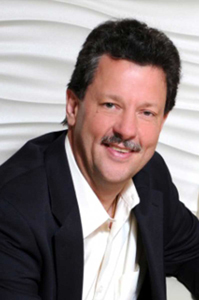David Dunphy, 56, is a principal at the hospitality design firm Studio in Santa Monica, a division of Hirsh Bender Associates. In addition to projects in San Francisco and Camarillo, Dunphy leads a team working on three local hotels: a Courtyard and Hampton Inn in Santa Monica, and Plaza La Reina Hotel in Westwood. Dunphy has spent more than 30 years working in a deadline-driven business, and has learned how to juggle multiple projects while carving out time for water sports. We spoke with Dunphy about how he maintains his calm as the projects pile up.
Question: Describe your morning routine.
Answer: I get up at 5:30 in the morning and I practice meditation with my wife until 6 a.m. I’ve been doing Sahaja meditation for over 30 years, and have both practiced and taught it. It puts me on an even keel. Then, I have a light breakfast, usually fruit or something of that nature, and we both get on the road at about 6:30. My commute to Santa Monica from Palos Verdes takes about an hour in lovely L.A. traffic – which I have prepared myself for by meditating.
What does your day look like when you arrive at the office?
Typically, we’re working on a few hotel projects, so I’m usually meeting with hotel designers. For lunch, I try to eat locally in Santa Monica to get my head clear and not get swallowed by work. I try to spend a full hour out, relaxing, eating and reading the paper. In my younger days, I used to eat at my desk, and I just don’t think that’s a formula for longevity. This is a deadline oriented business, so when we’re on deadline, sometimes we work until 8 or 9, but usually it’s more like 6 or 7. For both myself and my staff, I try to make sure people are out of here by 7 because I think it requires freshness to be creative. And in this industry, you’re being paid to be creative.
How do achieve work/life balance?
When I leave the office, it’s gone. I don’t think about it. I don’t check emails. I turn my phone off when I walk in the door because then it’s about my family.
Right now, my youngest daughter is traveling in Morocco and we Skype. My oldest daughter in West Hollywood and we try to have dinner once a week at a midpoint between here and there. Particularly for architects, this profession can be all consuming, and there’s a very high divorce rate. I avoided that by making an effort to make time for my family.
What were your strategies for making time for the girls when they were younger?
I tried to get home pretty religiously at 6 p.m. When I did travel, I tried to focus it and minimize it so it wasn’t in a continuous block. The most important thing was making time every day to sit with them and ask about their day, and find out about how things are going with their friends. Luckily, they were open with me and I was able to help them with their relationships, which for girls in high school and middle school can be very tough. We started the girls with meditation very early and would do it in the mornings together, and I think that helped keep the family balanced and on the same page.
How do you avoid stress?
I detach from the drama of a moment or deadline and ask, “What does this mean for the rest of my life?” When you look at things at a 1,000-foot level, it allows you to work without panic. Another thing is prioritizing. Every member of the firm juggles five projects at a time. You get scattered and diffused if you focus on all of it at once. You have to move through one thing at a time. I also try get in the water as much as possible, usually early on Saturday mornings. I go body boarding and I also snorkel with my wife. I think communing with nature is a great way to put things in perspective.

